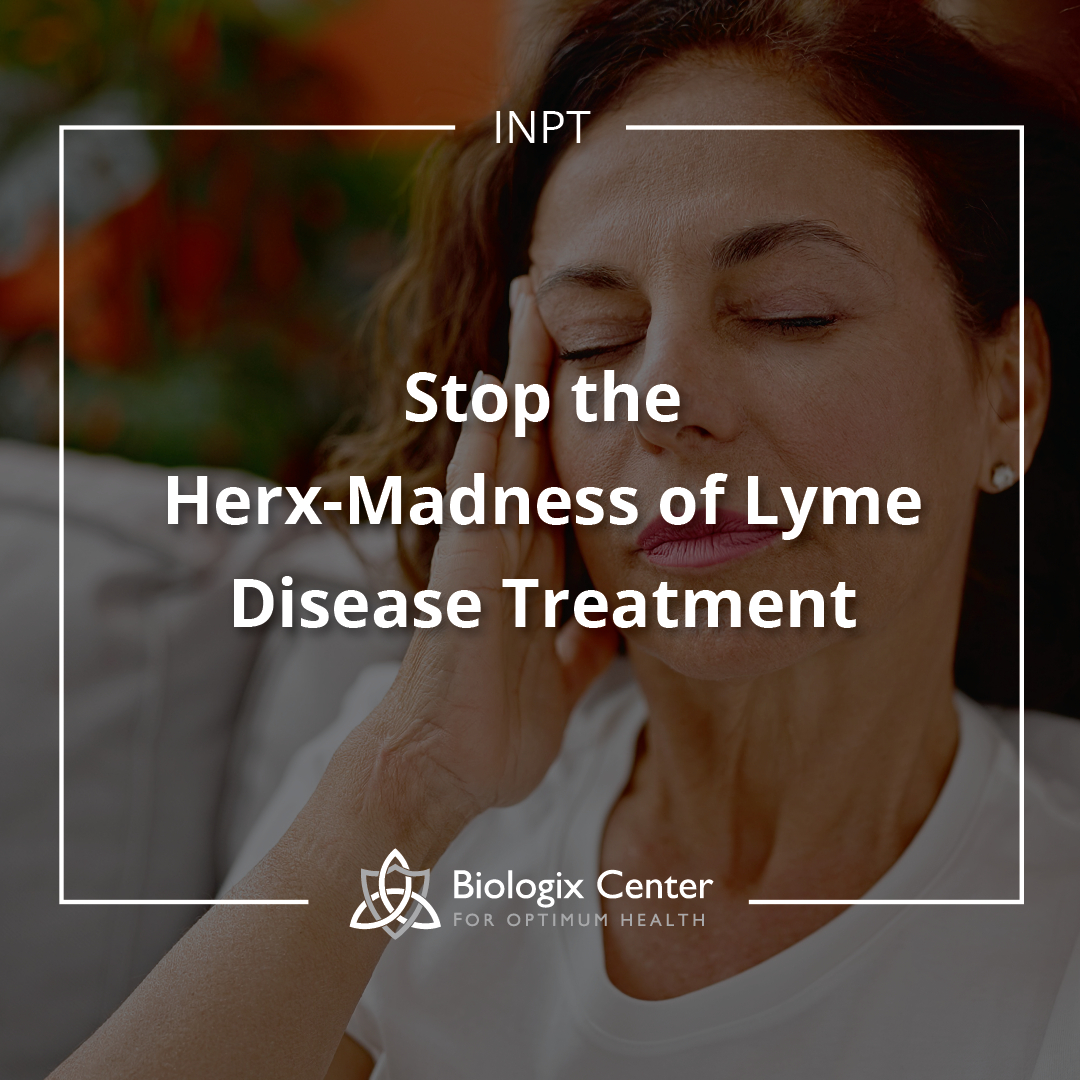By Dr. David A. Jernigan
The following is not an opinion piece, but a reporting of the latest peer-reviewed published research. Remarkable new research debunks the dominant explanation for why people undergoing antibiotic treatment for Lyme disease very often experience a dramatic worsening of their symptoms, as well as new symptoms, in what is known as a Jarisch-Herxheimer reaction. The dominant explanation has been essentially that the guts or endotoxins of the dying bacteria spill into the body causing this worsening of symptoms. This explanation, though widely held as true is, according to the scientific research, completely incorrect.
A Jarisch-Herxheimer response, otherwise known as a Herx reaction is a worsening of person’s symptoms during and after antibiotic treatment of the spirochetal infections syphilis, Lyme disease, leptospirosis, and relapsing fever (RF), associated with immune cells in the body releasing cytokines that increase inflammation and tissue damage. The popular idea that a herx is due to the direct die off exotoxins of the bacteria is not supported by the latest research. It is important to know that the release of bacterial exotoxins when they are killed is correct for various types of Gram-negative bacteria, such as Bartonella. It is also important to understand the very real possibility of antibiotic-induced release of endotoxins, sometimes leading to sepsis as the cause of a patients worsening symptoms during natural or prescription antibiotic treatment. Due to the fact that spirochetes do not have endo or exotoxins, any worsening is necessarily due to the direct or secondary metabolic toxic effect of the antibiotic, and/or their effect on other types of co-infecting bacteria.
This article will present research explaining why natural and prescription antibiotics cause severe herx reactions when compared to the use of induced native bacteriophages, which can completely annihilate the entire population of the targeted bacteria, with virtually no Herx reaction. The article will also present preventive measures to minimize herx reactions if inefficient treatments, such as natural and prescription antibiotics, are utilized.
What Actually Causes a Herx Reaction in Lyme disease and Relapsing Fever?
In order to develop effective therapeutic countermeasures to herx reactions, the pathophysiology, or the disordered physiological processes associated with a herx reaction, must be understood.
Many authors have incorrectly proposed that the Herxheimer reaction is caused by the release of toxins (endotoxins) by dying spirochetes, or Mast Cell Activation (MCAS) cytokine-responses causing inflammation in response to spirochete endotoxins. However, according to the most recent understanding, these mechanisms are largely unsupported by the research.
In a review of the research, Thomas Butler states, “After antibiotic treatment, spirochetes are rendered more susceptible to PMN phagocytosis likely caused by an alteration of the microbial surface to expose antigens and molecular patterns that allow antibody and complement to bind more effectively for phagocytic uptake. Once inside, PMN spirochetes probably provoke more severe inflammation.”
Butler goes on to say, “Causes of inflammation in the JHR (Herx Reactions) are multi-factorial. When spirochetes are cleared from blood by phagocytosis, rises in concentrations of pro-inflammatory cytokines occur. Spirochetal inflammatory substances include lipoproteins and nonendotoxin pyrogens that cause rises in cytokines such as TNF-a, IL-6, and IL-8, as well as rises in histamine.”
The True Cause of a Herx Reaction in Layman’s Terms
In layman’s terms, a Herx is not just any worsening from any cause while undergoing treatment with antibacterial medication. A Herx occurs with antibiotics and other antibacterial efforts, such as botanicals, due to the fact that while the antibiotics do kill some of the bacteria, they often only injure many of the bacteria and/or cause a slow death, which allows your body’s immune cells, called phagocytes, time to come along and gobble up (PNM phagocytosis) these injured and dying bacteria, much like a Pac-Man from the old video game.
Once gobbled up, these live bacteria release genetic material inside of the phagocyte, causing it (the Pac-Man) to crank out excessive amounts and various types of cytokines, which are biochemicals that promote inflammation. This does not occur when bacteriophages kill the bacteria, since the phages literally kill the bacteria outright and so rapidly, that when the Pac-men of the immune system come along, they only gobble up the dead pieces, and no cytokines are produced, therefore there is no increased inflammation.
A Herx reaction:
- Is not a desirable event.
- Serves no therapeutic benefit.
- Is a sign that the antibacterial medication is increasing inflammation and damage in the body.
- Is a sign of inefficient medication is being utilized, causing live and damaged bacteria to be engulfed by phagocyte immune cells.
- Should be avoided
Lessons from Bacteriophages: Less Herx From Bacteriophages Than Antibiotics:
Much of what we now understand about a Herx reaction is through the science of bacteriophages, which are viruses that only infect bacteria. When induced, or stimulated, bacteriophages can completely and rapidly kill all of the bacteria they infect, annihilating the entire target bacteria population. When the last of the bacterial population is dead, the bacteriophages themselves die within four days.
Bacteriophages kill bacteria by a process called lysis, the disintegration of the bacteria by rupture of the cell wall or membrane. To see this in action, watch the National Institute of Health video on this link. Research has demonstrated that Borrelia burgdorferi which were killed by lysis, did not cause nearly as much cytokine release, nor increased inflammosomes. Conversely, antibiotics often cause increased phagocytosis of the bacteria, resulting in significantly greater transcription of proinflammatory cytokine genes than do lysates.
Anti-Herx Therapeutic Measures: (If antibiotics and botanicals are being used to kill bacteria )
- Botanical/Nutitional/Homeopathic/Fatty Acid: Doctor ecommended anti-inflammatory and anti-cytokine support
- I.V. Hydration has been shown to reduce the occurrence and severity of herx reactions
- Hyperbaric Oxygen therapy (HBOT), and other oxygen therapies have been shown to reduce the severity of herx reactions
- BEMER mat therapy
- Near/Mid/Far Infrared Sauna therapy
- Antihistamines and enhance the optimum histamine clearance via enzyme activation in the metabolic pathway.
- NSAID’s can have a beneficial effect on acute herx reactions
- Note: Toxin-binder supplements used to bind up and eliminate bacterial endotoxins are understood now to not be of therapeutic benefit in that there are no bacterial endotoxins to bind. These binder products can often be beneficial for other environmental toxins.
Conclusion:
Antibiotics have dominated the medical treatment of infections for almost a century, are an inefficient approach to dealing with infections, especially in light of the more rapid and precise actions of therapeutic bacteriophage treatments.
Many people who believe they are feeling worse due to the medication working, are actually being injured by the clumsy manner in which antibiotics work, not to mention their direct pharmaco-toxic effects. Many people report having to ramp up to a therapeutic dose of the more popular antibiotics, such as Disulfiram, often experiencing horrible symptoms, leaving the patient to wonder if they should tough it out and continue the drug, risking being permanently injured by the process, or to discontinue altogether.
Patients are often left on their own, searching the social media groups for guidance and encouragement, since their physician offered no advice on dealing with the very predictable problems they will face.
In the article by Thomas Butler states, “Physicians need to anticipate a JHR when treating spirochetal diseases to provide supportive care of monitoring vital signs and administering fluids.” The prognosis according to the research linking in this article, is favorable for full recovery even if a herx reaction occurs, usually resolving in a few hours in most patients given supportive care and adequate weekly IV nutritional fluids, such as a Myers Cocktail, or High-dose Vitamin C with Glutathione.
Although for many years it was thought that a Herxheimer reaction was caused by the toxins released as bacteria die and break apart, we now know this is incorrect. A Herxheimer reaction the result of the ingesting of the live, antibiotic-weakened bacteria, by immune cells, specifically polymorphonuclear leukocytes, white blood cells, such as neutrophils, which eat the live bacteria and eventually digest them, but in the meantime the bacteria, through genetic transcription cause the production of highly proinflammatory cytokines, TNF-a, IL-6, IL-8, and histamine.
When the target bacteria die from phages causing their death by lysis, as is the case with INPT bacteriophage therapy, the bacteria burst and the polymorphonuclear cells gobble up the dead pieces. In that there are no live bacteria essentially being eaten by these immune cells, very little cytokines are produced.
Bacteriophages kill the targeted bacteria extremely quickly, killing all of the target bacterial population usually in less than seven days, which means that by the time the immune system can begin to respond, the war is over. This means that when neutrophils arrive at the scene to start the cleanup, there is only remnants of the dead bacterial, and no live bacteria are being engulf, therefore the bacteria cannot cause genetic transcription and thus cannot cause the production of excessive proinflammatory cytokine substances…thereby there is minimal if any Herx reaction. All of this translates into phages cause much less herx symptoms than do antibiotics.
Conversely, many of the worsening symptoms experienced with natural or prescription antibiotics, including the latest trending antibiotic, Disulfiram, are due to the disruptive nature of the medication on the patient’s metabolic processes and frank antibiotic toxicity. These antibiotic-induced Herxheimer reactions are often the cause of poor patient compliance, often causing the patient to self-reduce the therapeutic dosage, enabling improved tolerance but greater risk of bacterial mutations rendering the drug ineffective. Antibiotic treatment can also result in new symptoms that can last months or be permanent.
Bacteriophage therapies are a superior form of treatment in the fight of treatment-resistant microbial infections.
Ongoing Development of INPT at the Biologix Center
INPT was developed by Phagen Corp. and is being used at the Biologix Center for Optimum Health, as a part of an IRB study, to go beyond Borrelia and target any microbial issue, including all of the co-infections associated with Lyme disease, as well as Candida sp., mold, and parasite infections, however at this time the only lab test for detecting bacteria-specific phages is for Borrelia strains.
The future of INPT includes intravenous and injectable forms of application, in addition to the present oral medication, available through doctors only. INPT is not projected to be sold directly to the public at this time.
To Get Treatment:
If you would like to participate in our one to two week INPT programs please contact us at www.biologixcenter.com/get-treatment/ or call our Patient Care Department at 615-680-9918 Financial assistance is available for those with chronic illness of any type, who desire treatment at Biologix Center and are struggling financially.
A more detailed report of these findings are presently being edited for publication in peer-reviewed article submission.



